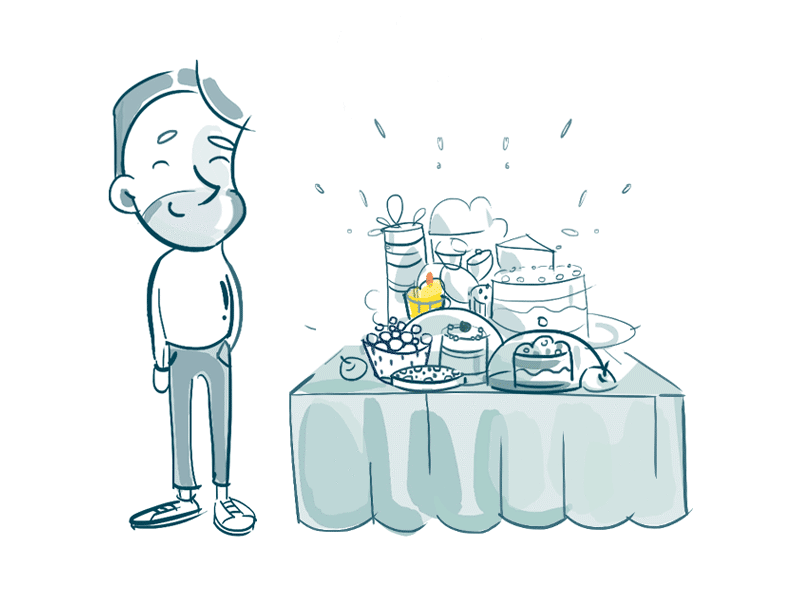- What we do
- Services
- Solutions
- Our Works
- Company
- Contact Us
If you google “how to find the best software development team”, you’ll get a number of decent articles covering the topic quite in-depth. Unfortunately, the same can’t be said about the client’s role in the development process, yet a good client contributes to one half of the project’s success.
To prove this hypothesis, we looked back at the real-life cases we’ve encountered and came up with five tips on how to be a good client.
Start Small
When creating an app from scratch, make sure the release version includes only the necessary minimum of features. Ideally — just one essential feature that makes a new product viable enough to enter the market.
Launching a simple version of the app can give you answers to a bunch of important questions:
- How do users react to the product?
- Do they use it in the way that you intended?
- What features do they use most often?
Hint: Your users become your customers, so to provide them with good customer service, give them some time to play around with the application and use the chance to discover their true expectations of the product. In doing so, you will be able to provide new features in small portions — at just the right time — making users crave more.
For instance, if you launch a new messenger, don’t include video calls in the initial release version. Text messages will definitely cover the users’ needs while you are trying to get an idea of what else they may need. Otherwise, you risk finding out upon release that your target users never really make video calls and prefer voice messages instead.
Another argument in favor of starting small is the money issue. Don’t invest everything you have in a product that may not even work as you expect it to. Launching a simple version to understand how users react to it and then adding one new feature at a time sounds like a much more reasonable plan from a financial perspective. For example, if you want to build a voicebot for insurance services, test it on a small group of users to see if the target audience needs a solution like that.

Stay Involved
We know it’s not easy to stay focused when you have several projects running at the same time — or when you are physically thousands of miles away, which is also sometimes the case. However, there are multiple ways to keep in touch with the development team and be an actively participating client.
Make sure you are aware of all the project updates. They may come to you as a brief weekly report or a new project build — depending on how the workflow is organized on the developers’ side. This will give you a general overview of how the project is progressing.
As a good client, participate in all video calls, meetups, and discussions along with your project manager. That’s how on the one hand, you’ll be aware of the project details, and on the other, learn how you can help.
Hint: If you want to be a good client, don’t expect the team to read your mind. You are the one who has the vision. If you see that the project is going in the wrong direction, be sure to interject at any stage to put everything back on track.
In one of our previous projects, we worked on an application for a client from the travel industry. When he felt he was not happy with the application design, he prepared a mood board with carefully-selected designs and colors for us to reference. Is it even necessary to mention that the result was just as he had imagined it?
A good client participates proactively!

Trust Your Team
Be sure to make a responsible choice in selecting the team to work with, and, once having made up your mind, be a good client and learn to trust them as professionals.
Sometimes clients, especially those with no technical or design background, do too much micromanaging due to a lack of knowledge. At the same time, any project requires making dozens of decisions every day, both technical and non-technical, and being too controlling may dramatically slow down progress.
Hint: If you feel you are close to overcontrolling, or simply need a second opinion about the project, consider inviting a third-party expert.
When selecting a third-party expert, we advise that you find someone you trust as both a person and as a professional. It may be a technical consultant, a design expert, or a strategist, depending on what part of the project you worry about the most. The expert will join the team once or twice a week and report to you if anything doesn’t go as planned.
However, a good client doesn’t rely fully on the expert’s opinion. Software products are not entirely about coding or design. Even if you cannot tell whether or not everything is okay with the code, you still can evaluate if the project solves your problem.

Be Ready to Pivot
Just as we previously mentioned — a good client is prepared to learn that all assumptions about the product, its usage, and the audience might be wrong. As we learned from our own experience, the only way to give users what they want is to experiment.
Hint: A good client is flexible. If something doesn’t work as you expected it to – change the direction.
StickerBox is our pet product that allows people to take photos of their friends and transform them into fun stickers. When we launched the app, we thought users would like to make custom stickers and manually tweak them the most. Soon after release, we found out they were much more amused with the stickers provided by the app.
We challenged ourselves to make a U-turn. We removed most of the customization features and released a version offering ready-made stickers with just one button click. A simple “one-button-to-magic” approach—and the popularity of the app skyrocketed.

Join the Team
Sometimes clients who come to us with an idea of a project don’t fully understand how it should be implemented. “We think that the market needs this, but we are not quite sure how it should work.” — we hear these words quite often.
Prototyping is a generally good way of finding the right realization of the project. A simple black-and-white wireframe may give an understanding of what features should or should not be added to the future application. But what if you’ve never even heard about prototyping?
Hint: If there is no other option, don’t hesitate to simply sit and brainstorm with the development team.
One time we had a really good client with an idea of an easy-to-use messenger for in-family communication. He felt he should occupy the niche but didn’t really know how to do it.
We took the idea of a messenger as a basis and started brainstorming. As a result, we came up with several bright ideas, such as a timeline of family events and an interactive family tree, and then the application saw the light of the day.

To Sum Up
Sometimes, it feels so tempting to step back and shift to other tasks once the project is safely delegated. Sometimes, vice versa, it seems impossible to entrust the realization of your vision and ideas to a remote team.
We hope our recommendations will help you maintain a balance between these two extremes and stay in tune with your development team. In fact, being a good client requires effort, and it is not only rewarding for both sides but above all, the product.
If you've got any questions, just contact us and we'll be right there for you
Your friends at YellowGot a project in mind?
Fill in this form or send us an e-mail
Subscribe to new posts.
Get weekly updates on the newest design stories, case studies and tips right in your mailbox.
